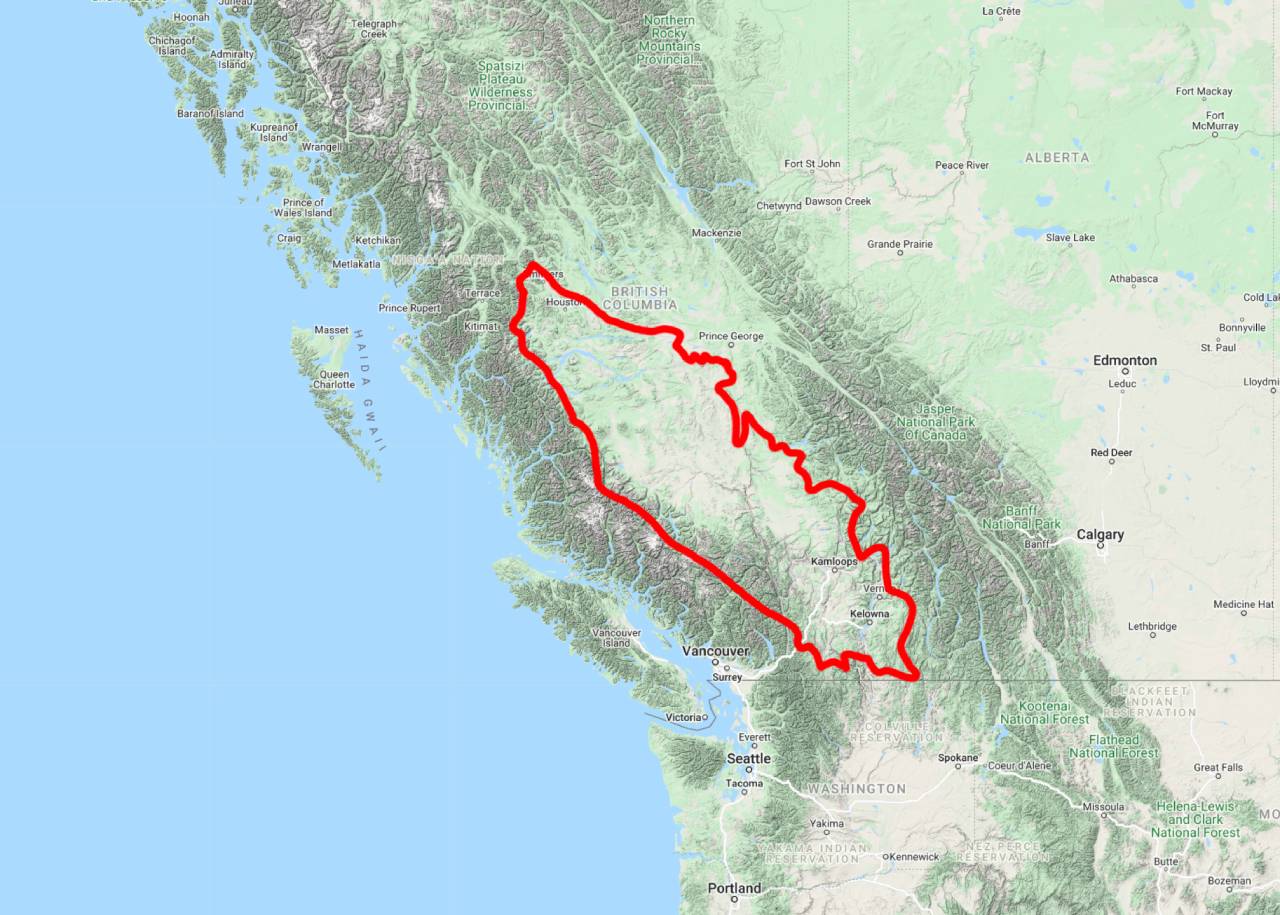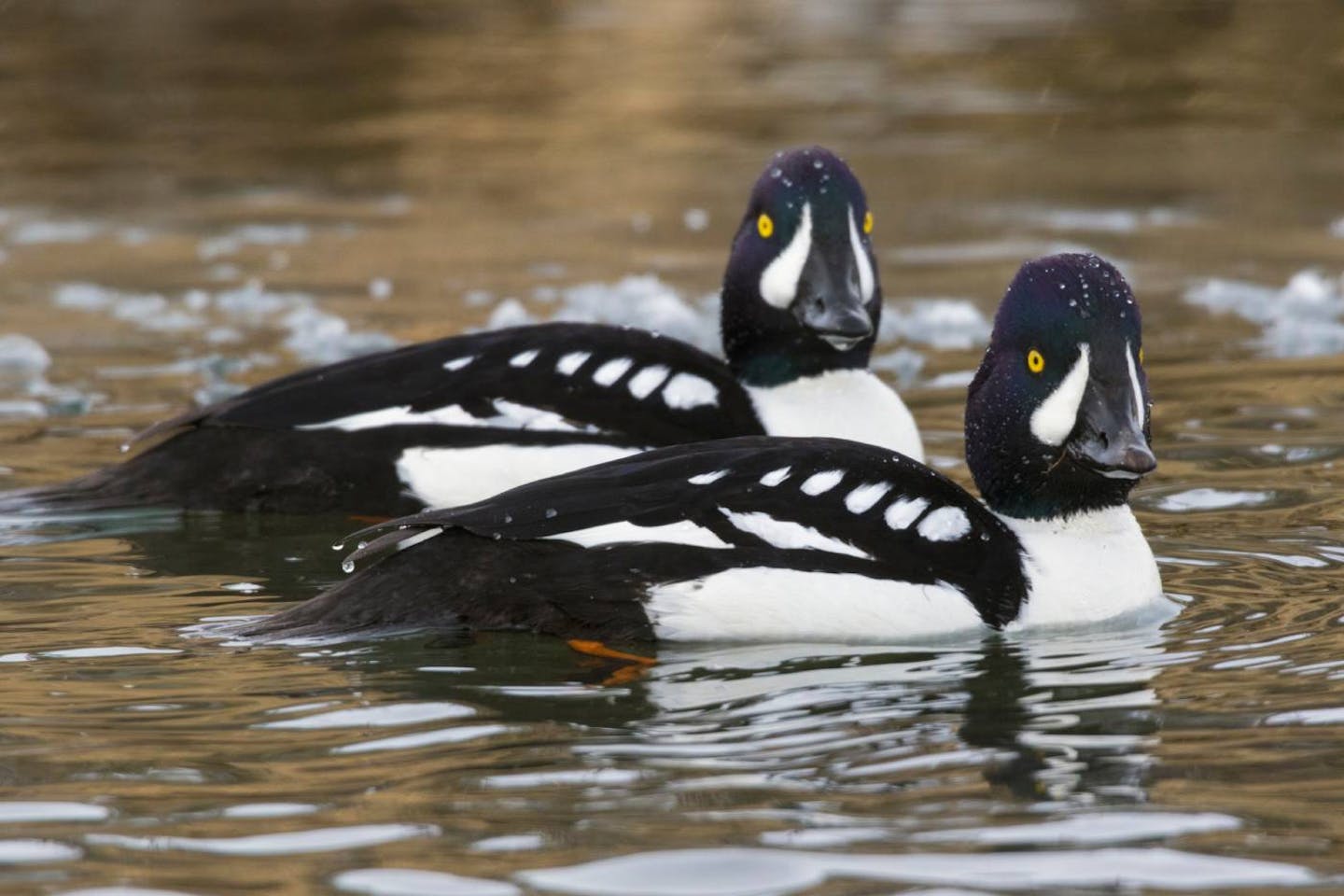Barrow's goldeneye: a species of duck with brilliant yellow eyes
One Earth's “Species of the Week” series highlights the flagship species of each of the 844 unique ecoregions contained within Earth’s bioregions.
In the densely wooded lakes and ponds of the Northwestern United States, Canada, and Iceland, there is a dark-winged duck that floats in silence amongst the boisterous quacks and honks of other birds. Piercing yellow eyes and study by English geographer John Barrow give the Barrow's goldeneye its name. A medium-sized sea duck, adult male Barrow's goldeneyes are 49 cm long (19.2 in), weigh 970 g (2.13 lb), and have crisp black-and-white feathers with a purplish gloss and black bill.

The Barrow's goldeneye is the flagship species of the Fraser Plateau and Basin Conifer Forests ecoregion, located in the Northwest Intermountain Conifer Forests bioregion (NA14).
Females are slightly smaller, measuring 43 cm (17 in) long, weighing 590 g (1.31 lb), and have gray feathers with fluffy brown heads and yellow bills. Both males and females have a distinct haunting glance as their dark facial plumage makes their eyes shine even more vividly.
The Barrow's goldeneye is a surprisingly quiet duck, but with characteristic wings that whistle in flight. Typically, their only vocalizations occur during the breeding season and even then, the squawks and croaks are low and guttural. Males perform acrobatic dances for an audience of females during courtship with the most spectacular move being the "head-throw-kick.”
In this sequence, a male repeatedly thrusts his head forward, then moves it back towards his rump, utters a call, and then flicks his head forward again all while splashing the water with his feet. Once a female is impressed, she will do some choreography of her own and it is common for the same pair to mate year after year.
.jpg)
Image credit: Courtesy of Len Blumin, Flickr
Like many other waterfowl, Barrow's goldeneyes are an integral part of wetland ecosystems. In the warmer months, they eat aquatic insects which keeps the populations of these pests in balance. As the temperature drops, the Barrow's goldeneye consumes crustaceans and mollusks which keep their numbers in check as well.
This, in turn, gives the lake, pond, or seafloor time to recover from burrowing species and allows aquatic plants to deepen their roots. So, perhaps the rowdy calls of other species of ducks and geese that live near the Barrow's goldeneye are for thanks as they then eat the blooming underwater vegetation.
Barrow's goldeneyes also have a somewhat symbiotic relationship with humans too.
The Indigenous and locals who live around Lake Mývatn in Iceland create nest boxes for the birds on the sides of their homes and barns. Known as húsönd, or “house ducks,” this has been a tradition for generations and a source of pride to homeowners who host these ducks. Although the species is now considered to have a healthy population, the Barrow's goldeneye has been greatly affected by human activity before, mainly the Exxon Valdez oil spill in 1989.
Conservation efforts like Suzanne Simard’s Mother Tree Project help create forest resilience in the Barrow's goldeneye Pacific Northwest habitats.
Interested in learning more about the bioregions of Northern America? Use One Earth's interactive Navigator to explore bioregions around the world.
Launch Bioregion Navigator


